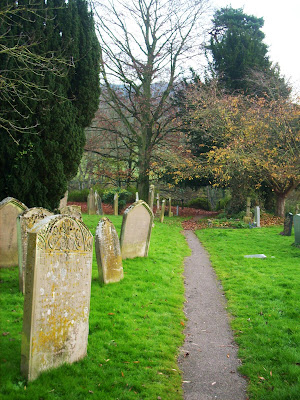








 ___________________________________________________________
___________________________________________________________Here is another important Llan named after Saint Tyddwyg, obviously another monk of the sixth century or thereabouts who established this lovely llan here at the side of the Wye. With his friends he would have purged it of evil spirits by praying and fasting overit for thiry days. The church and buildings would be built. There was once again the semicircular Churchyard providing a firm border between the holy terrain of the monks and that of the outside world, oftern. bloodier and moe cruel than today.
Llandydiwg or Dixton
This site is a confirmed ancient Welsh manastery by the eminent writer Diane Brooks.Its renaming after St Peter was probably confirmed after the acoming of the Normans to Britain. They were very interested in Welsh culture, but found some of the saints just twoo obscure. This Church of St Peter at Dixton, because of its fishing, and also that of St Maughams, Dingestow, Wonastow and several others, was given to the Priory of Monmouth and their tithes supported this church. The French Monks who administrated the whole were from St Florent at Saumur in France, and abbey which is still there!
St. Peter's is situated on the banks of the River Wye, just north of Monmouth. This attractive whitewashed building dates back to at least the 12th Century, though was probably a holy site before then. The llan stands to the East of Blestium or Roman Monmouth.
Here in the 7th century A.D. standing in Dixton churchyard and looking at the River Wye below you see you are standing in the llan or religious enclosure of an obscure Welsh holy man, Tyddwg. He gave his name to Dixton. Upstream and across the river is Hadnock, Hodda's oak, a Saxon settlement on the site of a Roman Villa. The river bank on the Hadnock side marks Offa's Dyke, dividing England from Wales.
The herring-bone masonry in the north wall of the nave may be Saxon.
The Church is frequently subject to flooding and brass plates near the chancel arch record the height of the more memorable floods.
There is a new balcony at the back of the church so that precious items can be out of reach of the water. This has been decorated with a beautiful oak screen.
It was unfortunate I could not gain access to the church, possibly because of security concerns...





















































































No comments:
Post a Comment